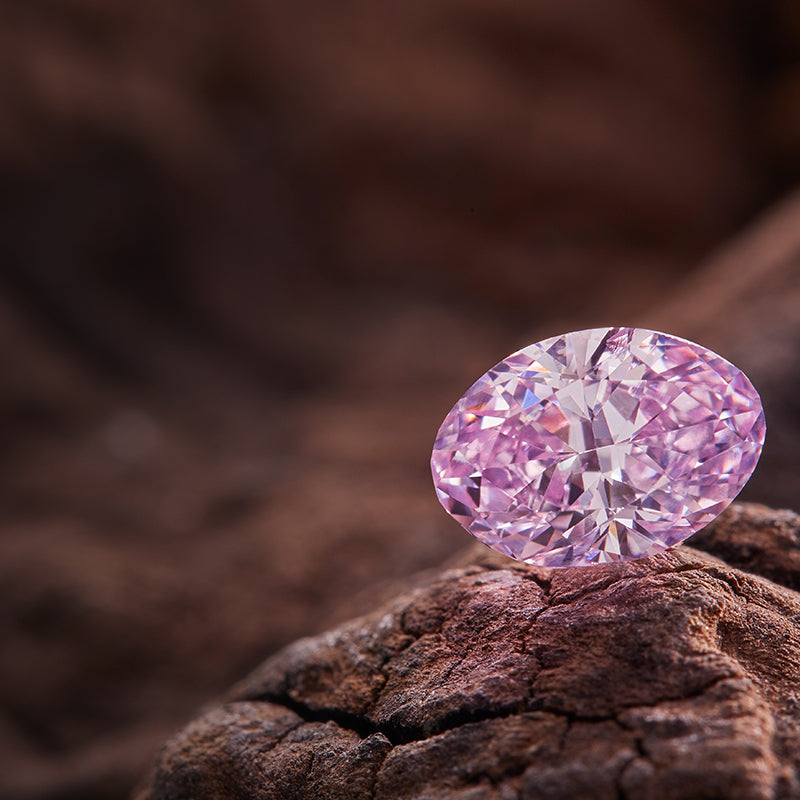
Provenance in Collecting Pink Diamonds
Share
More Than Beauty Alone
When collectors consider pink diamonds from the Argyle mine, their evaluation goes beyond colour, size, and brilliance. Just as vital is provenance — the documented origin and history that ties a diamond to a specific source and story.
In the world of collectibles, provenance elevates an object from something merely beautiful into something historically and culturally significant. For pink diamonds, provenance adds confidence and context, whether supported by a GIA certificate, an original Argyle certificate, an Argyle Origin (AO) report, or a combination of these.
What Is Provenance?
In its simplest form, provenance is the record of a diamond’s origin, grading, and documentation. It establishes:
- Where the diamond came from.
- How it has been described and certified.
- Whether it has been included in recognised events, such as the Argyle Tender.
For collectors, provenance is not just paperwork — it is part of the diamond’s identity.
Argyle’s Historical Legacy
The Argyle mine created a unique legacy of provenance through its grading system, Tender catalogues, and mine-issued certificates during its years of operation.
- Argyle certificates documented mine-specific colour grading, provenance, and often carried laser inscriptions.
- Tender catalogues recorded the rarest stones, which are now cultural artefacts in their own right.
- The mine’s closure in 2020 gave these documents even greater significance, as no further original mine-issued certificates would ever be produced.
Argyle Certificates vs Argyle Origin (AO) Reports
It is important to distinguish between the two:
- Argyle Certificates (pre-2020): Issued while the mine was operating, using Argyle’s proprietary colour grading scale (such as 1PP, 2PR, etc.) and sometimes laser inscriptions. They form part of the historic record of the mine’s production and cannot be recreated.
- Argyle Origin (AO) Reports (post-closure): Introduced after the mine closed, these are modern reports confirming Argyle origin. Stones are submitted through authorised Argyle partners and undergo analysis before being issued with an AO report. Like the original certificates, AO reports use Argyle’s colour and clarity grading and are linked to a unique laser inscription and lot number.
For collectors:
- Original Argyle certificates carry historic weight as documents issued during the mine’s operational life.
- AO reports provide a modern pathway to reinforce provenance, particularly for stones that were originally sold with only a GIA certificate.
The Argyle Origin (AO) Program
The AO program is designed to provide a clear link between a diamond and its Argyle origin.
- Verification workflow: Stones are analysed through Argyle’s appointed gemological process; Argyle then issues an AO Gem Analysis Report including colour and clarity grading, with a unique lot number and laser inscription.
- Access: Submission is not open to the public — only select authorised Argyle partners, ateliers, and trade customers can submit diamonds for AO certification.
- Purpose: AO reports do not replace original mine certificates, but they add provenance and reassurance for collectors.
The Role of GIA Certification
The Gemological Institute of America (GIA) remains the global standard for diamond grading.
- GIA reports are universally recognised and respected.
- They describe colour, clarity, cut, and carat with consistency trusted worldwide.
- Many collectors own pink diamonds with GIA certification only — and these remain highly desirable and collectible.
For some stones, having both a GIA report and an AO report creates dual assurance: one confirming gemological qualities, the other verifying Argyle origin.
Why Provenance Matters
A pink diamond’s beauty may speak for itself, but provenance enhances its long-term significance.
- Authenticity: Documentation reassures collectors of both quality and origin.
- Confidence in resale: Provenance supports smoother transactions and greater trust.
- Cultural cachet: Tender-featured diamonds or named stones carry added prestige.
- Legacy: Records ensure a diamond’s story is preserved for future generations.
Whether provenance comes from GIA alone, Argyle certificates, or AO reports, it strengthens confidence and enriches the diamond’s narrative.
Provenance in Other Collectible Categories
The importance of provenance is widely recognised in other markets:
- Art: Works with documented exhibition history carry stronger weight.
- Watches: Timepieces with original papers and boxes often command higher demand.
- Wine: Provenance of storage and release history reassures buyers of authenticity.
For pink diamonds, provenance plays the same role — transforming them from natural wonders into collectible treasures.
Protecting Provenance
Collectors can take practical steps to ensure provenance remains intact:
- Store certificates securely — GIA, Argyle, and AO documents alike.
- Digital archiving — scans provide insurance against loss.
- Tamper-proof cases — preserve diamonds and paperwork together.
- Estate planning — ensures provenance passes with the diamond to future generations.
Today’s Market Context
In today’s selective market, provenance has never been more important. Buyers value reassurance, and stones with strong documentation — whether GIA-only, Argyle-certified, or AO-certified — typically inspire greater confidence.
The key is not one document over another, but the combination of beauty and credible documentation that strengthens a diamond’s long-term story.
Conclusion
Provenance is the foundation of confidence in collecting pink diamonds. Whether through a GIA certificate, an original Argyle certificate, or a modern Argyle Origin (AO) report, documentation ensures a diamond’s beauty is matched by authenticity and story.
For pink diamonds from the Argyle mine, provenance has always been powerful. With both historical certificates and today’s AO program (accessible through select partners), collectors have multiple ways to reinforce the legacy of their stones.
At Collective Insights, we view provenance as the cornerstone of collectibility — the bridge between natural beauty, authenticity, and enduring cultural significance.

